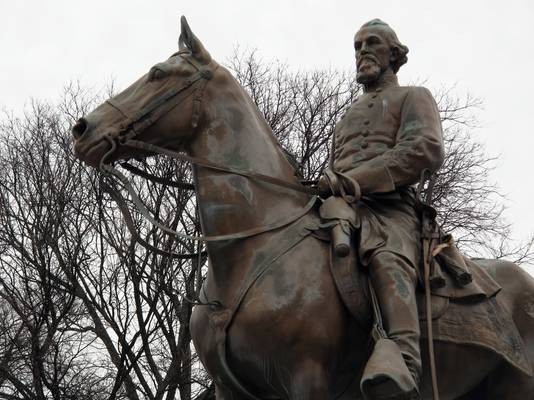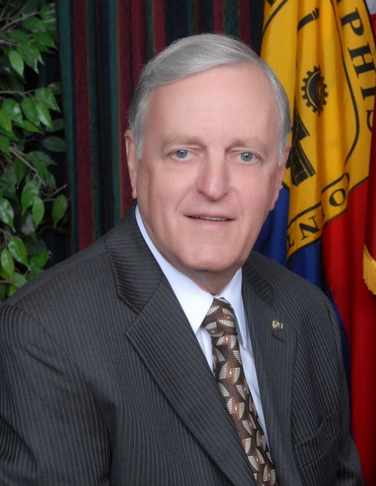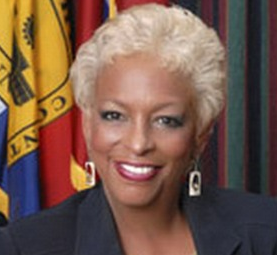There was a Ku Klux Klan rally in Overton Park during the mid-1960s — I can’t remember the specific date — where they did the night-time cross burning and the whole deal. It was quite the white-robed spectacle, and my teenage friends and I attended in order to heckle the rubes. The Klan no longer appeared frightening in their customary outfits, merely ridiculous. We understood that beneath each hood was just another cracker-ass redneck with a chaw between his teeth and gums and a tin of Red Man in his back pocket. A speech was delivered by Robert Shelton, the Klan Grand Wazoo, who shortly before had granted an extensive interview to Playboy magazine, which I read between the centerfold and naked girly pictures. Even as a teen, I was convinced he was a damn fool. So the clown show that is coming to Memphis in March is way past the day when this bunch intimidated anyone and an embarrassment even to an organization like the Sons of Confederate Veterans. The Klan, however, is riding in defense of General Nathan Bedford Forrest — only the general would not approve.
O Lord, please don’t force me to write about Nathan Bedford Forrest at the end of Black History Month. Let this cup passeth from me. You see, I was born in Memphis, where the very mention of the name Forrest brought either a visceral loathing or a wistful admiration, depending on the individual. There is nothing defensible about an illiterate, bad-tempered, racist slave trader who made a fortune dealing in human bondage, but the Forrest name was such a lightning rod for controversy, I decided to read a couple of books about him.
The more informative was That Devil Forrest by John Allan Wyeth. Although Wyeth was a Confederate soldier and Southern sympathizer, his biography contains eyewitness testimony from the combatants. The book tends to gloss over some of the most glaring accusations of evil toward Forrest. After all, slavery is a crime against humanity, second only to genocide, and for that there can be no recompense. The single thing that historians all agree upon, however, is that Forrest was a born soldier. General William T. Sherman, no friend of the South, said that Forrest was “the most remarkable man the civil war produced on either side.” He was the only soldier who entered the war as a private and emerged as a general, and his fearlessness in battle was legendary. In close combat, Forrest killed 30 foes, had 29 horses shot from beneath him, and was wounded four times. What the Civil War historians admire most about Forrest was his unflinching courage in battle.
Even as a schoolboy, I was also a Southerner, so I was perplexed and had to wonder, “You mean our side lost?” That’s an adjustment for a child who knows nothing of the war’s particulars but only the region in which he lives. Consequently, I was thrilled by stories of Forrest’s raid on Union-occupied Memphis, when he chased General Washburn from the Gayoso Hotel in his nightshirt. There’s still a street called Escape Alley in honor of the event, yet no one has suggested changing that name.
I look as an objective observer at the current controversy over the Memphis City Council’s decision to rename the parks memorializing the Confederacy. I can understand the wounded Southern souls descended from gray uniformed soldiers, as well as the constant irritant Forrest Park is to the citizens of a city that is more than 60 percent African-American. Bedford, as he was called, was an unrepentant white supremacist, and to have his glorified tomb in the center of the city is galling to most of them. But it is history, regardless of how ugly that history may be, and renaming monuments or parks does not change that.
The upcoming Klan rally will eulogize the group’s founder and first grand wizard, although the Klan to which Forrest belonged was created in 1867 and officially disbanded in 1869. Testifying before a congressional hearing, Forrest said the KKK was formed as “a protective political military organization,” primarily to fill a lawless void and oppose the war profiteering of Reconstruction. When its members became night-riders and terrorists against black citizens, Forrest resigned and lobbied for the organization’s dissolution.
I don’t care if they disinter Bedford and the Missus and move them back to Elmwood Cemetery where they were first buried. There’s already a Forrest State Park near Camden. Why call a city park Health Sciences Park with a dead man there? The Memphis location could be used for reflection, especially upon the end of Forrest’s life when, in 1875, he was invited to speak before a group of black Southerners advocating racial reconciliation, and the general espoused an agenda of equality and harmony between the races.. Oh, you say you didn’t know that? Most folks don’t.
Perhaps Forrest’s transformation from a conscience-less slave trader to an advocate of interracial peace is a story of redemption, like Saul of Tarsus on the road to Damascus. Both men were knocked off their horses.
There is no way to temper the sins of N.B. Forrest. He said, “War means fighting, and fighting means killing,” and he was a ruthless killer. When he saw that the Confederate cause was lost, he told his troops, “Humanity demands that no more blood be shed.”
In a farewell address, the “unlettered general” said, “Civil War, such as you have just passed through, naturally engenders feelings of animosity, hatred, and revenge. It is our duty to divest ourselves of all such feelings. Whatever your responsibilities may be to government, society, or to individuals, meet them like men. Obey the laws, preserve your honor, and the government to which we have surrendered can afford to be, and will be, magnanimous.”
Were the Memphis City Council only so generous. If it’s wrong to kick a man when he’s down, what does it say to kick him when he’s dead?
Randy Haspel writes the “Born-Again Hippies” blog, where a version of this column first appeared.


